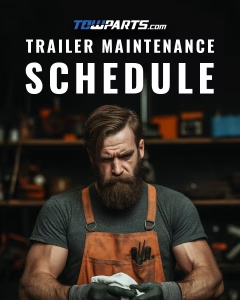
WHAT IS THE BEST TRAILER MAINTENANCE SCHEDULE?
Since launching on February 3, 2025, TowParts.com has become the premier destination for premium trailer
Title: The Top 15 Safety Tips for Towing a Trailer
Towing a trailer is a big responsibility—one that comes with its own set of challenges and risks. Whether you’re hauling a camper for a family vacation, moving heavy equipment for work, or transporting a boat for a weekend getaway, safety should be at the forefront of your mind. In fact, according to organizations like NATDA (North American Trailer Dealers Association) and Trailer Safety Week, preparation and knowledge are your best tools when it comes to preventing accidents and ensuring smooth journeys.
In this comprehensive guide, we’ll explore 15 essential safety tips that every trailer owner should know. Each tip is designed to help you maintain control, protect your investment, and keep everyone on the road safe. From choosing the right equipment to performing pre-trip checks, these actionable steps will increase your confidence and enhance your towing experience. By the end of this article, you’ll be well-equipped to handle almost any towing situation and will have a firm grasp of the best practices supported by leading industry experts.
1. Choose the Right Trailer and Tow Vehicle
A successful towing experience begins with matching the right trailer to your vehicle. Not every car, truck, or SUV is built to handle heavy loads, so it’s crucial to check the owner’s manual for your vehicle’s towing capacity. This capacity represents the maximum weight your vehicle can safely haul. Exceeding it can lead to engine strain, brake failure, and compromised handling on the road.
Next, confirm that you have the correct hitch type and class. Hitches are categorized by their capacity to handle different weight ranges. Selecting the right class ensures that the connection point between vehicle and trailer won’t fail under heavy stress or sudden maneuvers. Additionally, make sure the trailer itself is structurally sound. Check for rust, dents, or other potential weaknesses in the frame.
Once you’ve verified both the vehicle’s and trailer’s ratings, invest in quality safety accessories like safety chains and proper hitch locks. This extra layer of security can prevent dangerous disconnections during travel. For more professional insights, consider visiting NATDA, which offers extensive resources on trailer standards, or Trailer Safety Week for educational materials on safe towing. By ensuring vehicle-trailer compatibility from the start, you’ll set the foundation for a much safer, more controlled towing experience.
2. Understand Weight and Balance
Poor weight distribution is one of the most common causes of trailer sway. When your trailer’s load isn’t balanced correctly, even small changes in speed or direction can cause instability, making it harder to maintain control of both vehicle and trailer. A good rule of thumb is to keep approximately 60% of your cargo weight in front of the trailer’s axle. This positioning aids in reducing sway and ensures a more stable ride.
Equally important is tongue weight—the downward force the trailer’s tongue exerts on the hitch. Typically, tongue weight should be around 10–15% of the total trailer weight. Too little tongue weight and the trailer might sway uncontrollably; too much and you could overload your vehicle’s rear axle. Use a specialized scale or consult professionals to measure this accurately.
If you plan to haul especially heavy items, consider installing or upgrading your Trailer Suspension components to handle the load more efficiently. A well-maintained suspension system distributes weight better and absorbs road shock. Also, don’t forget to secure your cargo. Even the best load distribution won’t help if items slide or shift mid-trip, altering the balance you worked so hard to achieve. By understanding and applying proper weight distribution techniques, you minimize trailer sway and improve overall driving control.
3. Inspect Tires and Wheels
Your tires are the critical contact point between your vehicle, your trailer, and the road. Before any trip, inspect all tires—both on the tow vehicle and the trailer—for proper inflation. Refer to the manufacturer’s recommended psi (pounds per square inch) levels, often found on a sticker inside the driver’s side door or in the owner’s manual. Underinflated or overinflated tires can lead to uneven wear, reduced fuel economy, and potentially dangerous blowouts.
In addition to checking pressure, examine tire tread depth. Use the “penny test” or invest in a tread depth gauge to ensure your tires have enough grip. Bald tires drastically reduce traction and increase the risk of skidding or hydroplaning, especially in wet conditions. While you’re at it, look over the rims for any signs of cracks, bends, or corrosion. Damaged wheels can compromise the tire’s ability to stay sealed and properly inflated.
Don’t forget to keep a spare tire on hand for both the tow vehicle and the trailer, along with the tools you need to change them. A quick tire check can save you hours of roadside headaches and keep everyone safer on the road. Regular maintenance of tires and wheels is a simple yet crucial step to ensure your towing setup remains stable and reliable throughout your journey.
4. Secure All Cargo
One of the easiest ways to create hazards on the highway is by failing to secure your cargo properly. When items shift, the trailer’s center of gravity changes, which can lead to unstable handling and unpredictable swaying. Loose items also risk falling onto the roadway, endangering other drivers. To avoid these issues, use high-quality tie-downs and cargo straps rated for the weight of your load. Make sure to choose straps with heavy-duty hooks that won’t easily slip off attachment points.
It’s also wise to use non-slip mats or padding beneath items prone to sliding. For smaller or irregularly shaped goods, consider using a cargo net or extra straps to ensure everything remains in place. If you’re transporting anything that might catch wind—such as furniture or lightweight construction materials—cover it with a durable tarp. This prevents items from becoming airborne at high speeds.
Beyond safety, properly secured cargo means you’ll arrive at your destination with items intact and undamaged. Saving yourself from potential accidents—and the frustration of damaged property—makes this extra precaution well worth the effort. For more professional pointers and guidelines on best practices, browse informational resources at Trailer Safety Week. They provide additional checklists and videos to help you master cargo security before hitting the road.
5. Check Lights and Wiring
Functional lights on your trailer—brake lights, turn signals, and running lights—are crucial for communicating your intentions to other drivers. If these lights fail, you’re far more likely to be rear-ended or involved in a collision. Before each trip, connect the trailer wiring harness to your vehicle and verify that all lights illuminate properly. Enlist a friend or family member to watch the rear while you test the brakes, turn signals, and running lights.
Wiring harnesses can corrode over time or become damaged from exposure to the elements. If you notice flickering or dim lights, examine the harness, connectors, and bulbs for signs of rust, frayed wires, or loose connections. Small issues can escalate quickly, so it’s always better to address them immediately.
If your trailer lacks modern lighting technology or needs an upgrade, consider adding LED lights for greater visibility and longevity. They consume less power and are generally more durable than traditional incandescent bulbs. For more information on maintaining a safe and legal trailer setup, check out the resources offered by NATDA. They regularly publish articles and guidelines on trailer safety and compliance with federal regulations. Remember: properly functioning lights not only protect you and your cargo but also help ensure the safety of everyone sharing the road.
6. Use Mirrors Effectively
Maintaining a clear, wide field of vision is essential when towing a trailer. Your standard vehicle mirrors may not offer a full view of what’s behind or beside you if the trailer is wider than your tow vehicle. Installing extended side mirrors or towing mirrors can significantly improve your ability to see vehicles, pedestrians, or obstacles.
Adjust each mirror so that the side of your trailer is just visible, with as much of the surrounding area included in the reflection as possible. It’s also helpful to do a test run or practice maneuvering in an empty parking lot to get accustomed to the extended mirror view. If blind spots remain an issue, consider adding wireless rearview or backup cameras specifically designed for trailers.
Safe driving also means being aware of other vehicles trying to pass you. Frequent mirror checks let you anticipate potential hazards and change lanes responsibly. While technology such as blind-spot monitoring can be helpful, it’s no substitute for manual checks. By optimizing and correctly adjusting your mirrors, you’ll stay more informed about what’s happening around you—and you’ll have a much easier time executing turns, lane changes, and parking maneuvers while towing.
7. Practice Proper Braking
Towing a trailer increases the momentum and weight you’re carrying, meaning your stopping distance will be longer than usual. One of the best ways to prevent accidents is to practice gradual braking. Sudden stops can cause your trailer to jackknife or sway, especially if the road conditions are poor. Stay vigilant about vehicles ahead and anticipate traffic slowdowns so you can brake gently and early.
If your trailer is equipped with electric brakes, test them before hitting the open road. Properly functioning brakes on your trailer can drastically reduce stopping distance and improve handling. They also protect your tow vehicle from excessive wear and tear. If you need to install or upgrade your trailer’s brakes, explore our dedicated selection of Trailer Brakes for reliable, high-quality options.
Remember to check brake fluid levels and keep brake components clean and free from dirt or debris. Regular maintenance not only extends the life of your braking system but also safeguards your ability to stop quickly in unexpected situations. For more tips and detailed how-to guides, consider consulting the educational resources at Trailer Safety Week. By honing your braking technique and ensuring your system is in top shape, you’ll reduce risks and drive with greater peace of mind.
8. Observe Speed Limits and Drive Smoothly
Speed limits exist for a reason—especially when you’re towing a trailer. Higher speeds multiply the forces acting on your tow vehicle, making it more difficult to control swaying, cornering, and stopping. Many states have specific speed limits for vehicles with trailers, and it’s wise to adhere to them or even go slightly slower if road or weather conditions are challenging.
Smooth acceleration, braking, and steering are critical for maintaining trailer stability. Sudden, jerky movements can cause cargo to shift and lead to dangerous trailer sway. Instead, plan your maneuvers well in advance. Signal early, brake gradually, and accelerate at a steady pace. This driving style is easier on your tow vehicle’s transmission and engine while also improving fuel economy.
Staying in the right lane is generally recommended, allowing faster traffic to pass without forcing you to constantly change lanes. If other drivers become impatient, resist the urge to speed up beyond safe limits. The goal is to arrive safely, not necessarily quickly. For additional strategies on driving under various road conditions, check out NATDA’s articles, which often highlight best practices for safe towing. By respecting speed limits and using smooth, deliberate driving techniques, you’ll significantly reduce the risk of losing control and help make the road safer for everyone.
9. Watch Your Clearance
Driving with a trailer can significantly change your vehicle’s profile. You’ll need more space to make turns, and your overall length can make it challenging to navigate tight corners or narrow streets. Before you start your trip, note the total height of your tow vehicle and trailer, especially if you have a tall cargo like an RV or a boat with a tower. Low bridges, parking garages, and overhanging trees can cause serious damage if you misjudge your clearance.
Use wide turns when you need to maneuver sharp corners, keeping an eye on both your mirrors and the surrounding traffic. If possible, plan your route to avoid congested areas, tight urban streets, and old bridges with low clearances. GPS navigation apps designed for larger vehicles or trucks can be helpful in this regard.
In addition to vertical clearance, pay attention to your trailer’s width. If you’re unsure about a narrow opening or tight spot, it might be safer to park the trailer and check things out on foot. Being cautious and well-prepared can save you from expensive repairs and unfortunate accidents. Properly understanding and accommodating the extra space required by your towing setup goes a long way toward preventing common mishaps on the road.
10. Keep an Eye on Sway and Use a Stabilizer
Trailer sway can be terrifying if you’ve never experienced it. It often arises from high winds, improper weight distribution, or sudden maneuvers. The best first step is prevention. Ensure your load is balanced, and your tires are in good shape. However, if you sense swaying while driving, gently let off the accelerator and hold the steering wheel steady. Avoid slamming on the brakes or making sharp turns, as these can worsen the situation.
Anti-sway bars or stabilizer hitches are practical solutions for many drivers. They help keep the trailer aligned with the tow vehicle and reduce the side-to-side movement. If you’re consistently experiencing sway, you might also consider upgrading your Trailer Axles or Trailer Suspension components to better handle load weight and road conditions. Modern suspension technology can significantly diminish excessive swaying, especially for heavier trailers.
Periodically check the condition of your sway control equipment to ensure it’s working properly. Even something as small as a loose bolt or a worn bushing can compromise your stabilizing system. By taking a proactive stance against trailer sway, you maintain better control, protect your vehicle and cargo, and greatly reduce stress during your trips.
11. Perform a Pre-Trip Checklist
A pre-trip checklist is the easiest, most effective method to catch minor issues before they become major problems on the road. Start by walking around your entire tow vehicle and trailer setup, visually confirming that all connections are secure, lights are functional, and tires are properly inflated. Make sure your hitch is locked in place and safety chains are attached correctly, forming a crisscross pattern under the tongue for extra security.
Double-check your brake system, especially if you have electric trailer brakes. Listen for any unusual sounds when you apply them. Inspect your cargo straps, tie-downs, and tarp covers, ensuring that nothing is loose or likely to shift during the drive. If something looks worn or suspect—like frayed straps or corroded wiring—address it immediately.
Finally, confirm that your mirrors are angled correctly. Adjust them for maximum visibility of both the trailer and the adjacent lanes. Running this pre-trip checklist only takes a few minutes, but it can drastically reduce the risk of breakdowns or accidents. For a more comprehensive guide, visit Trailer Safety Week, where you can find printable checklists and safety resources. Think of your pre-trip inspection as a small time investment that can pay off big in safety and peace of mind.
12. Maintain Safe Following Distance
Towing a trailer adds significant weight to your setup, making it more challenging to stop quickly in sudden braking situations. Therefore, increasing your following distance is essential. As a rule of thumb, consider adding one additional second to your standard follow distance for every 10 feet of trailer length. For instance, if you normally keep three seconds behind the vehicle in front of you, extend that to five or six seconds when towing a medium-sized trailer.
Why so much space? The extra distance gives you enough time to react if the vehicle ahead brakes hard or if traffic slows unexpectedly. It also helps other drivers understand your situation and avoid cutting in too closely. Remember, many drivers on the road might not realize you’re towing and could underestimate your reduced stopping power.
Adapting this habit can also help lower stress levels. With more time to make decisions, you’ll feel calmer and less rushed. Combine this with smooth acceleration and braking to further reduce wear and tear on both your tow vehicle and trailer. The key is foresight: by giving yourself (and others) more room, you reduce the likelihood of sudden lane changes, jackknifing, or rear-end collisions.
13. Plan Your Route in Advance
Not all roads are created equal, especially when you’re towing a large or heavy trailer. Narrow lanes, hairpin turns, or steep inclines can pose serious challenges and increase the risk of accidents. Research your route in advance using truck-specific GPS apps or online tools that let you filter out roads with weight restrictions or low-clearance bridges. These specialized maps take into account the dimensions of your vehicle-trailer combination, minimizing surprises.
Mark potential rest stops and gas stations that have enough space for you to maneuver without feeling squeezed. Long road trips may also benefit from planning overnight accommodations with trailer-friendly parking. Doing a bit of homework can save you from nerve-wracking driving conditions, wasted fuel looking for a suitable turnaround point, or even damage to your trailer.
Keep in mind that real-world conditions—like road construction or traffic accidents—can still force you to adjust. Stay informed by listening to local traffic updates or using real-time navigation tools. Though it might feel like extra work, careful route planning is one of the best ways to ensure your trip remains smooth, safe, and efficient.
14. Keep Up with Maintenance
Regular maintenance is key to a safe and hassle-free towing experience. Beyond checking tires, lights, and brakes, you should also schedule routine inspections of critical components such as axles, bearings, and suspension systems. If you notice uneven tire wear or unusual sounds when in motion, it could point to a problem with your Trailer Axles or suspension.
Performing regular lubrication of moving parts—like hitch joints and pivot points—can extend their lifespan and improve performance. Overlooking basic maintenance can result in sudden failures on the road, putting you and others at risk. Whenever you replace or upgrade parts, opt for high-quality components to ensure durability. You might also consider using Trailer Axle Service Kits, which provide everything you need for a comprehensive axle overhaul in one convenient package.
If you’re not comfortable doing the work yourself, enlist a professional mechanic experienced in trailer maintenance. This is especially important if you tow frequently or carry heavy loads. Many trailer dealerships and service centers can perform thorough multi-point inspections, giving you peace of mind. Consistent, proactive maintenance means fewer breakdowns, less downtime, and safer travels wherever the road takes you.
15. Stay Focused and Avoid Distractions
Finally, perhaps the most vital safety tip is to keep your full attention on the road. Distracted driving is dangerous in any vehicle, but the added complexity of towing makes focus even more critical. Texting, scrolling through playlists, or entering destinations on a GPS while in motion takes your eyes—and mind—off driving. If you absolutely must make a call or send a message, find a safe place to pull over or rely on a passenger to assist with tasks.
Remember that mental distractions are just as hazardous as physical ones. Stress or fatigue can impair your judgment, reaction time, and overall alertness. Plan for breaks every couple of hours, especially on long trips. Use rest stops or well-lit parking areas to stretch, check your equipment, and refuel both your vehicle and yourself.
If you’re traveling with a passenger, delegate tasks like managing navigation or adjusting climate controls. Your job is to keep both hands on the wheel and eyes on the road, consistently scanning for changes in traffic or road conditions. By eliminating distractions and staying mentally engaged, you’ll not only protect yourself but also set a positive example for others on the road.
Conclusion
Towing a trailer is more than just hitching up and hitting the road. It involves careful planning, proper maintenance, and consistent vigilance behind the wheel. By following these 15 essential safety tips—ranging from choosing the right equipment to staying focused and avoiding distractions—you significantly reduce the risks associated with towing. Resources like NATDA and Trailer Safety Week offer additional support and guidelines that can further enhance your expertise.
Also, remember that your trailer’s performance depends heavily on the quality of its components. Whether you’re upgrading your Trailer Brakes or checking your Trailer Suspension, investing in reliable parts pays off in safety and peace of mind. Regularly inspecting and maintaining your Trailer Axles and using Trailer Axle Service Kits can keep you one step ahead of potential problems.
With the proper approach, towing can be a seamless, enjoyable part of your travels—whether you’re embarking on a cross-country adventure or simply moving equipment across town. By prioritizing safety, you ensure that every journey is a success, protecting yourself, your cargo, and everyone else who shares the road. Safe travels and happy towing!
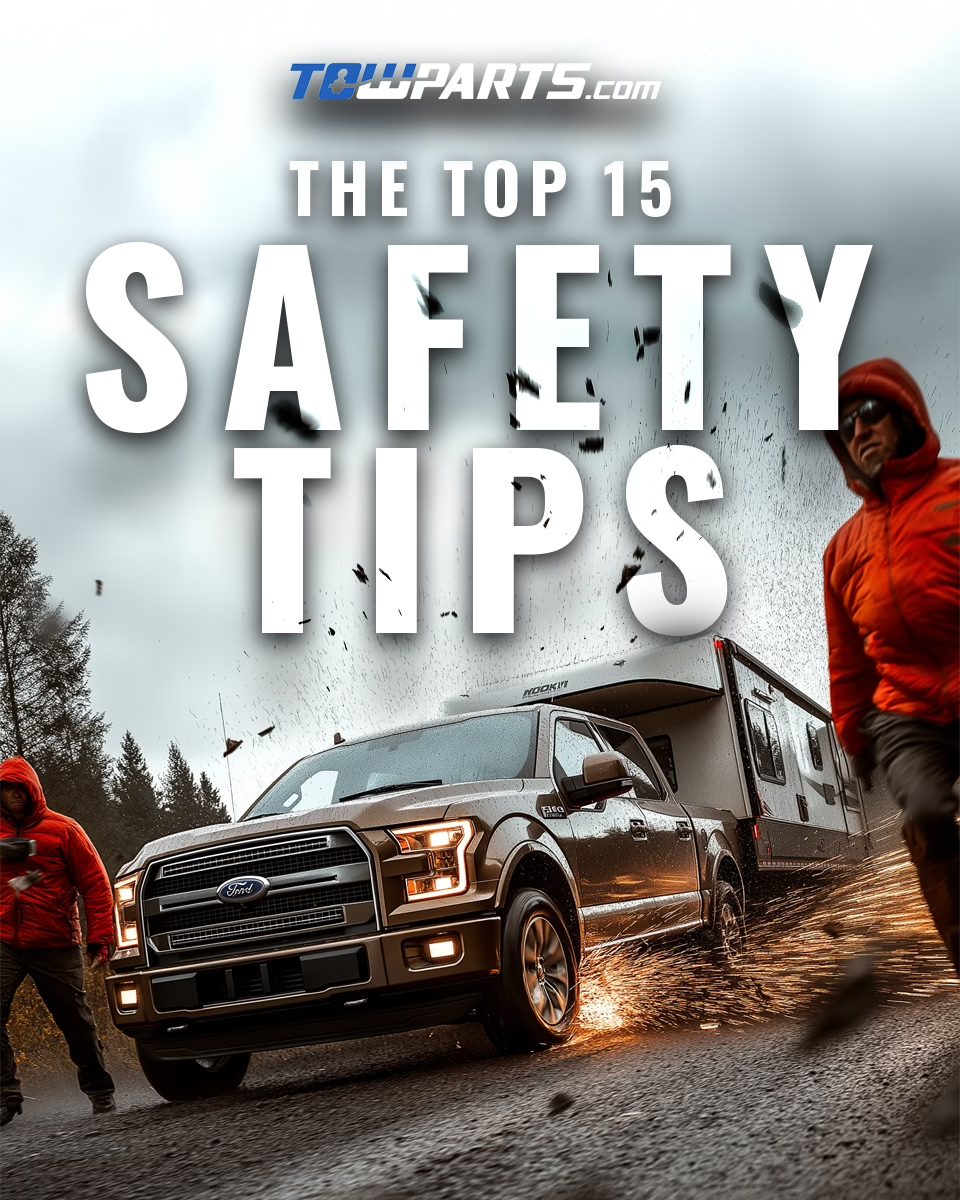

Since launching on February 3, 2025, TowParts.com has become the premier destination for premium trailer

One of the first big decisions you’ll face as a trailer hauler is choosing between
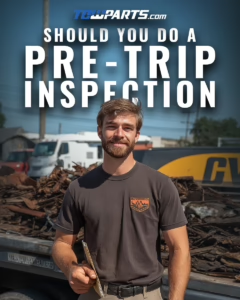
Looking to keep your trailer road-ready and safe? This comprehensive guide covers everything from pre-trip
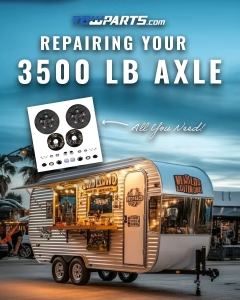
A well-maintained axle is the key to smooth, safe towing. If you’re noticing uneven tire
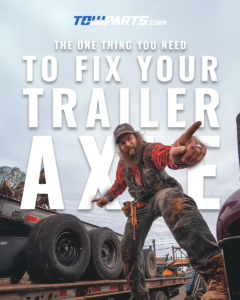
Trailer Axle Service Kits simplify maintenance by providing all the essential components—hubs, bearings, seals, races,
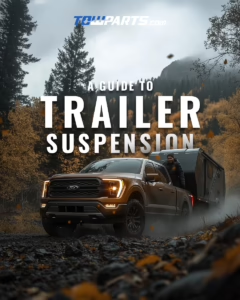
Discover how the right trailer suspension can transform your towing experience. From leaf springs to